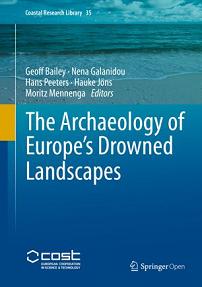 Actualités
Actualités 

 |
Geoffrey N. Bailey, Nena Galanidou, Hans Peeters, Hauke Jöns & Moritz Mennenga (2020) - The Archaeology of Europe’s Drowned Landscapes, Cham, Springer Open, 561 p. EAN 978-3-030-37367-2, 0,00 €. This is the final volume of the SPLASHCOS research network and marks the completion of an international and collaborative survey to compile and evaluate the known records of underwater material around Europe’s coastlines, deposited during periods of low sea level and subsequently drowned by sea-level rise at the end of the Last Glacial Period. Some of these underwater finds, especially those exposed in the intertidal zone, have been known about since the last century but have languished in obscure publications, museum archives, or national sites and monument records. Systematic underwater investigation and excavation did not begin until the 1970s and only then in a few research centres, notably in Denmark, Bulgaria, and Israel. Only since the turn of the new millennium has this field of underwater research come into focus as a significant missing part of the archaeological record, and many new investigations have begun or gained new momentum during the past decade, not least because of improved technologies of marine exploration and remote sensing, intensified industrial exploitation of the seabed, and collaboration between offshore industries, government agencies, and commercial archaeologists. The material reviewed here covers 20 countries bordering all the major marine basins from the Atlantic coasts of Ireland and Norway to the Black Sea and from the western Baltic to the eastern Mediterranean. Nearly 3000 underwater find spots are known, ranging from isolated artefacts to in situ settlements and spanning a period from c. 1 million years ago to the establishment of modern sea level between 7000 and 2000 years ago. In this introductory chapter, we outline the history of investigations, highlight the importance of this underwater record for a better understanding of European (and world) prehistory, explain the rationale for the research and the way we have structured the volume, and summarise some key issues. The chapters are organised in four parts, and each part is prefaced by its own editorial introduction summarising key themes for that group of chapters. |


